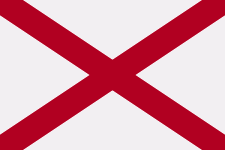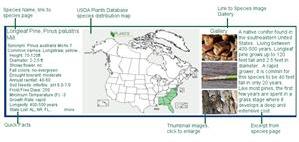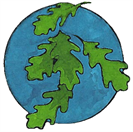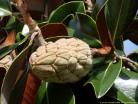

State Tree: Longleaf Pine
Looking for a nursery near you?
Check out our nursery listing by county below!
Sorry, we do not currently have any tree nursery listings for this state. We do update these lists, so please check back.
Check out our nursery listing by county below!
Sorry, we do not currently have any tree nursery listings for this state. We do update these lists, so please check back.

-Color denotes a tree that is rare or endangered

Want to add your tree to our picture gallery? Click here for details!

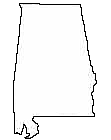
'Heart of Dixie, 'We dare maintain our rights'


™
Alabama

Monday, May 19, 2025
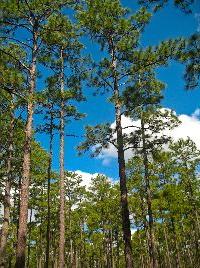
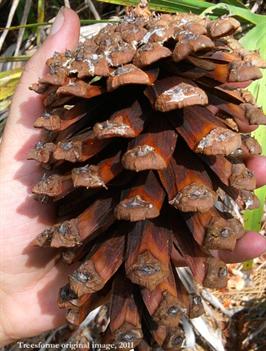
treated with poultices and salves. In the late 1800's,
it was even used to treat tuberculosis. At one time,
Pinus palustris was one of the most widely used
trees in naval stores all over the world. It's pitch,
resin and tar were valuable in the industry and
helped to establish this native tree as a commercial
commodity. Needles are commonly used as pine
straw mulch, which is gaining popularity for the
benefits over traditional bark mulch. Lesser known
are uses in the culinary and beauty world. Oils are
often used to scent perfumes and resin, also known
as rosin or colophany, is used in skin treatments.
The food industry collects oils from the needles,
which is used as flavorings in soft drinks and bakery
items. Learn More
Native Trees of Alabama
Longleaf pine is a leading commericial timber in the southern United States.
Uses include lumber, pulpwood, and veneer. Resin is also collected and used in the
production of turpentine. Turpentine has been used in times past in treatments of a
variety of ailments. Respiratory complaints like coughing, bronchitis, common colds,
and influenza were eased by steam baths and inhalers. Skin problems, wounds and
sores were also

Custom Search
We are part of the Hubpages community.
Click here for more info.
Click here for more info.
Tree lists:
•A-Z by scientific
name
•A-Z by common
name
•By Family
For state A-Z list click state name below.
•A-Z by scientific
name
•A-Z by common
name
•By Family
For state A-Z list click state name below.

our site! You can read more about them here, the official Alabama State website, which is
also where we learned of them. There is an additional site, the Moon Tree Homepage, with
even more information. Moon trees aside, Alabama is home to a wide variety of tree
species, made possible by the climate and the diversity of habitats.
Follow the links to view species native to Alabama. If the genus is not linked, species are listed on the family page.
Aceraceae, Maple
Anacardiaceae, Sumac
Rhus, Sumac
Toxicodendron, Poison Oak
Annonaceae, Custard Apple
Aquifoliaceae, Holly Family
Ilex, Holly
Arecaceae, Palm
Betulaceae
Betula, Birch
Carpinus, Hornbeam
Corylus, Hazelnut
Ostrya, Hophornbeam
Bignoniaceae, Trumpet Creeper
Catalpa, Catalpa
Caprifoliaceae, Honeysuckle
Sambucus, Elderberry
Viburnum, Viburnum
Cornaceae, Dogwood
Cornus, Dogwood
Nyssa, Tupelo
Cupressaceae- Cypress
Chamaecyparis, Cedar
Juniperus, Juniper
Taxodium, Bald cypress
Aceraceae, Maple
Anacardiaceae, Sumac
Rhus, Sumac
Toxicodendron, Poison Oak
Annonaceae, Custard Apple
Aquifoliaceae, Holly Family
Ilex, Holly
Arecaceae, Palm
Betulaceae
Betula, Birch
Carpinus, Hornbeam
Corylus, Hazelnut
Ostrya, Hophornbeam
Bignoniaceae, Trumpet Creeper
Catalpa, Catalpa
Caprifoliaceae, Honeysuckle
Sambucus, Elderberry
Viburnum, Viburnum
Cornaceae, Dogwood
Cornus, Dogwood
Nyssa, Tupelo
Cupressaceae- Cypress
Chamaecyparis, Cedar
Juniperus, Juniper
Taxodium, Bald cypress
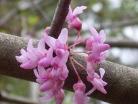
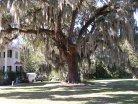
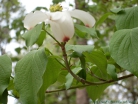
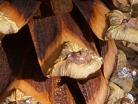
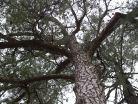
Alabama Tree Facts

Longleaf Pine, Pinus palustris
©2012 TreesForMe Original Image. See usage requirements.
Forested acres: 22.8 million
Percent of land forested: 68%
Rank among states for percentage of forested land: 3rd
Predominant forest type: Loblolly- Shortleaf Pine
Number of urban trees: 205,847,000 (as of 2001)
Urban trees per capita: 69 (as of 2001)
Number of Tree city USA communities: 84
Number of invasive trees/shrubs: 7 (see state list for noxious/invasive plants)
Most damaging insect (to trees): Southern pine bark beetles
Non-native insect threats: Emerald Ash borer, Walnut Twig Beetle, Redbay Ambrosia Beetle
Number of tree families in our collection: 38
Number of endangered or threatened species in our collection:
Sources: Alabama Forestry Commission, 2013.
Additional state resources:
Alabama Forestry Commission
Alabama Forestry Association
Alabama Cooperative Fish and Wildlife Unit- Auburn University
Percent of land forested: 68%
Rank among states for percentage of forested land: 3rd
Predominant forest type: Loblolly- Shortleaf Pine
Number of urban trees: 205,847,000 (as of 2001)
Urban trees per capita: 69 (as of 2001)
Number of Tree city USA communities: 84
Number of invasive trees/shrubs: 7 (see state list for noxious/invasive plants)
Most damaging insect (to trees): Southern pine bark beetles
Non-native insect threats: Emerald Ash borer, Walnut Twig Beetle, Redbay Ambrosia Beetle
Number of tree families in our collection: 38
Number of endangered or threatened species in our collection:
Sources: Alabama Forestry Commission, 2013.
Additional state resources:
Alabama Forestry Commission
Alabama Forestry Association
Alabama Cooperative Fish and Wildlife Unit- Auburn University
Alabama Tree Families and Genera

click to enlarge.
Useful information while browsing species:
• How to read a botanical name
• How to use our species boxes:
• How to read a botanical name
• How to use our species boxes:
-Color denotes a tree that is rare or endangered

Please note: This is not a complete list of all native tree families and species found in Alabama. We are constantly working towards a more comprehensive list and will add families and their species as completed.
Additional Resources:
North American Native Tree Families
North American A to Z List by Scientific Name
North American A to Z List by Common Name
North American Native Tree Families
North American A to Z List by Scientific Name
North American A to Z List by Common Name
Cyrillaceae, Cyrilla
Cliftonia, Cliftonia
Ebenaceae, Ebony
Diospyros, Persimmon
Ericaceae, Heath
Fabaceae, Pea
Fagaceae, Beech
Quercus, Oak
Hamamelidaceae, Witch-hazel
Hippocastanaceae, Horse-chestnut
Juglandaceae, Walnut
Carya, Hickory
Juglans, Walnut
Lauraceae, Laurel
Magnoliacae, Magnolia
Moraceae, Mulberry
Morus, Mulberry
Myricaceae, Bayberry
Morella, Bayberry
Oleaceae, Olive Family
Fraxinus, Ash
Pinaceae, Pine
Pinus, Pine
Platanaceae, Plane-tree
Platanus, Sycamore
Cliftonia, Cliftonia
Ebenaceae, Ebony
Diospyros, Persimmon
Ericaceae, Heath
Fabaceae, Pea
Fagaceae, Beech
Quercus, Oak
Hamamelidaceae, Witch-hazel
Hippocastanaceae, Horse-chestnut
Juglandaceae, Walnut
Carya, Hickory
Juglans, Walnut
Lauraceae, Laurel
Magnoliacae, Magnolia
Moraceae, Mulberry
Morus, Mulberry
Myricaceae, Bayberry
Morella, Bayberry
Oleaceae, Olive Family
Fraxinus, Ash
Pinaceae, Pine
Pinus, Pine
Platanaceae, Plane-tree
Platanus, Sycamore
Rhamnaceae, Buckthorn
Rosaceae, Rose
Crataegus, Hawthorn
Malus, Crab-apple
Prunus, Plum/Cherry
Rubiaceae, Madder
Rutaceae, Rue
Salicaceae, Willow
Populus, Cottonwood
Salix, Willow
Sapindaceae, Soapberry
Sapotaceae, Sapodilla
Styracaceae, Storax
Symplocaceae, Sweetleaf
Theaceae, Tea
Tiliaceae, Lindon
Tilia, Basswood
Ulmaceae, Elm
Celtis, Hackberry
Ulmus, Elm
Yucca, Yucca
Rosaceae, Rose
Crataegus, Hawthorn
Malus, Crab-apple
Prunus, Plum/Cherry
Rubiaceae, Madder
Rutaceae, Rue
Salicaceae, Willow
Populus, Cottonwood
Salix, Willow
Sapindaceae, Soapberry
Sapotaceae, Sapodilla
Styracaceae, Storax
Symplocaceae, Sweetleaf
Theaceae, Tea
Tiliaceae, Lindon
Tilia, Basswood
Ulmaceae, Elm
Celtis, Hackberry
Ulmus, Elm
Yucca, Yucca
Alabama Endangered or Threatened Tree Species

This is not a comprehensive list but we are always working on adding more and will update accordingly.
Sorry, we currently have no endangered species listed. Please check back.
Sorry, we currently have no endangered species listed. Please check back.


There's an interesting thing in Alabama
many people don't know about. Alabama
has Moon trees. What is a moon tree? On
the Apollo 14 flight in 1971 loblolly pine seeds
were sent along to the moon and then
germinated when they came back. The resulting
trees were given to the Governer by the US
Forest Service and the Alabama Forestry
Commission. Some are located at the Alabama
State Capitol building in Montgomery. We would
love to have some pictures of them to add to
|
|
|
|
|
| A-Z scientific | ||
| A-Z by Common Name | ||
| Families | ||
| Browse by State | ||
| Rare or Endangered Species | ||
| Trees_with_Special_Uses | ||
| Tallest and Biggest |
| Aceraceae Maple Family | ||
| Anacardiaceae Sumac Family | ||
| Annonaceae Custard Apple Family | ||
| Aquifoliaceae Holly Family | ||
| Arecaceae, Palm Family | ||
| Betulaceae Birch family | ||
| Bignoniaceae Trumpet Creeper Family | ||
| Burseraceae Frankincense Family | ||
| Caprifoliaceae Honeysuckle Family | ||
| Chrysobalanaceae Coco-plum Family | ||
| Cornaceae Dogwood Family | ||
| Cupressaceae Cypress Family | ||
| Cyrillaceae Cyrilla Family | ||
| Ebenaceae Ebony Family | ||
| Ericaceae Heath Family | ||
| Fabaceae Pea Family | ||
| Fagaceae Beech Family | ||
| Hamamelidaceae Witch Hazel Ffamily | ||
| Hippocastanaceae Horse Chestnut Family | ||
| Juglandaceae Walnut Family | ||
| Lauraceae Laurel Family | ||
| Leitneriaceae Corkwood Family | ||
| Magnoliaceae Magnolia Family | ||
| Meliaceae Mahogany Family | ||
| Moraceae Mulberry Family | ||
| Myricaceae Bayberry Family | ||
| Myrsinaceae Myrsine Family | ||
| Myrtaceae Myrtle Family | ||
| Nyctaginaceae Four Oclock Family | ||
| Olacaceae Olax Family | ||
| Oleaceae Olive Family | ||
| Pinaceae Pine Family | ||
| Platanaceae Plane Tree Family | ||
| Polygonaceae Buckwheat Family | ||
| Rhamnaceae Buckthorn Family | ||
| Rosaceae Rose Family | ||
| Rubiaceae Madder Family | ||
| Rutaceae Rue Family | ||
| Salicaceae Willow Family | ||
| Sapindaceae Soapberry Family | ||
| Sapotaceae Sapodilla Family | ||
| Simaroubaceae Quassia Family | ||
| Styracaceae Storax Family | ||
| Symplocaceae Sweetleaf Family | ||
| Theaceae Tea Family | ||
| Tiliaceae Lindon Family | ||
| Ulmaceae Elm Family | ||
| Taxaceae Yew Family | ||
| Yucca Family |
| Maple A-Z |
| sumac_family_a-z |
| custard_apple_family_a-z |
| holly_trees_a-z |
| palm_family_a-z |
| birch_family_a-z |
| trumpet_creeper_family_a-z |
| honeysuckle_family_a-z |
| dogwood_family_a-z |
| cypress_family_a-z |
| heath_family_a-z |
| pea_family_a-z |
| beech_family_a-z |
| walnut_family_a-z |
| magnolia_family_a-z |
| olive_family_a-z |
| rose_family_a-z |
| willow_family_a-z |
| franklinia |
| elm_family_a-z |
| Federal List | ||
| State Lists | ||
| Invasive_species |
| Restoration of the American Chestnut | ||
| Restoration of the American Elm | ||
| Sustainable Forestry |
| Contact Us | ||
| Our Contributors | ||
| Photo of the Month | ||
| Usage Requirements | ||
| FAQ | ||
| Report a Broken Link |
| photo_submission |
| Photo Store |
